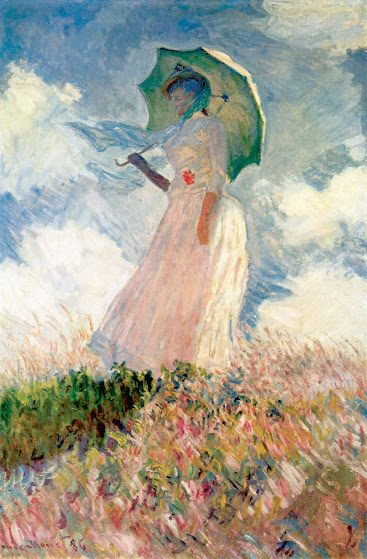Claude Monet "Study of a Figure Outdoors: Woman with a Parasol Facing Left"

Wind! It must be Spring if there is wind. If you are a regular blog follower, you may remember a very similar painting I reviewed a year ago. Our artist is Claude Monet (1840-1926) and it was typical of Monet to make several versions of the same basic subject, making alterations in the time of day and pose of the model. But, I selected this for this week simply because I felt it was time for an artwork that was truly beautiful. The model for this painting is Suzanne Hoschede, the daughter of Monet's second wife, Alice Hoschede. It is considered by some to be a portrait, but there is obviously no attempt at creating a likeness. This is a painting of the wind, the land, the air It is so strong we can almost feel the breeze. While the upper two thirds are figure and sky the bottom third is blowing grass. Pull it up and look close. Is there a color in the rainbow not depicted? We can see the figure has on a white dress, but Monet paints it in yellow, rose


